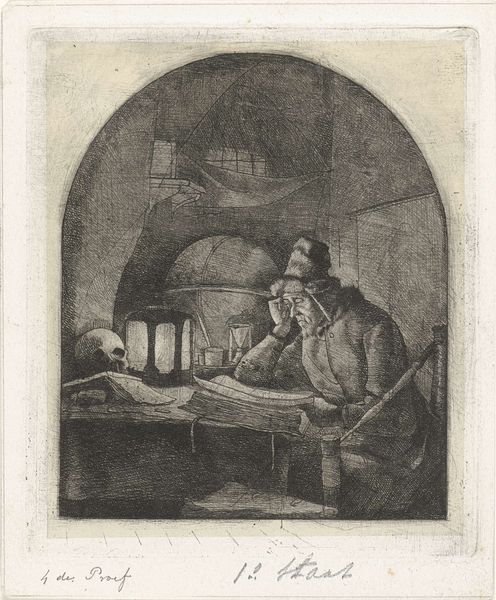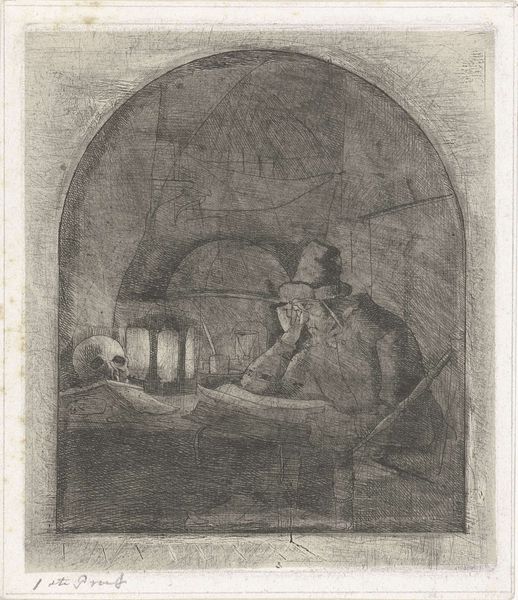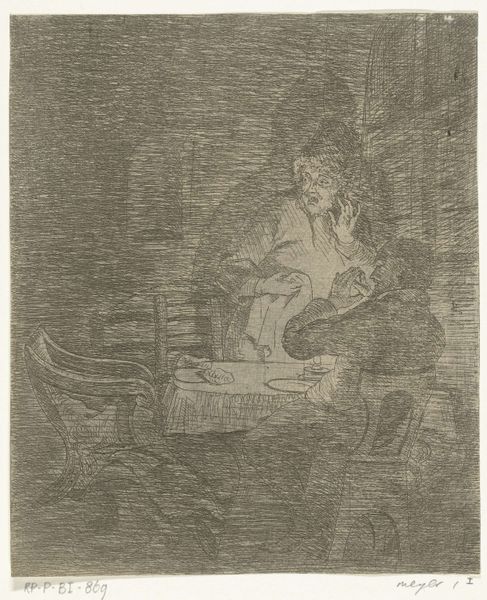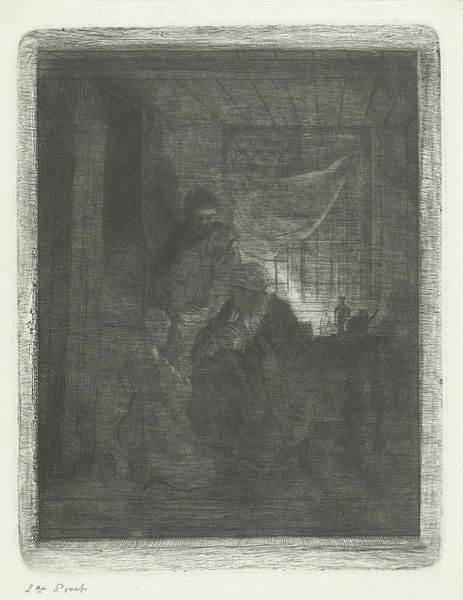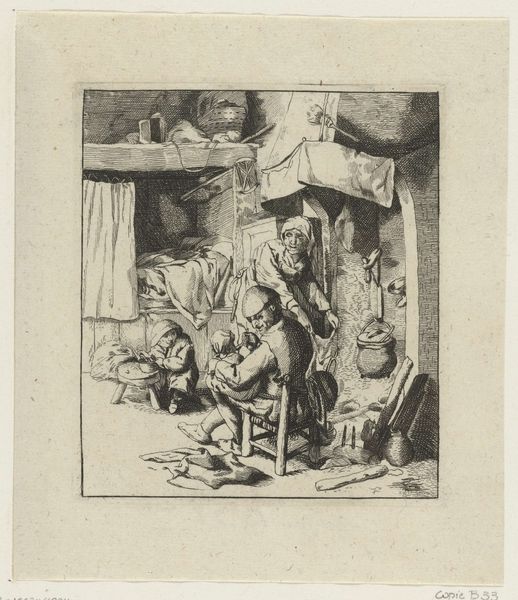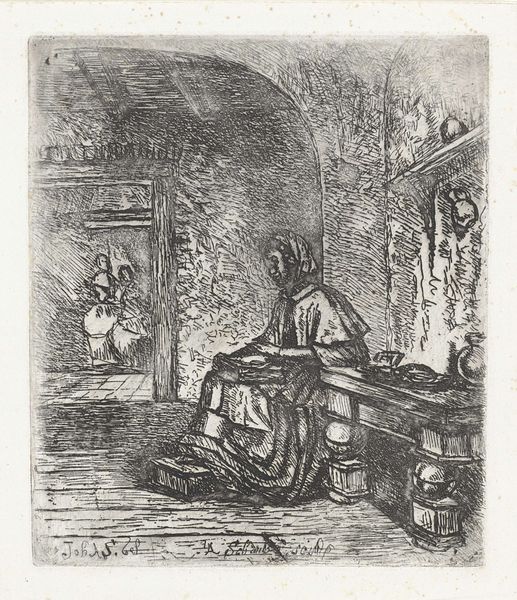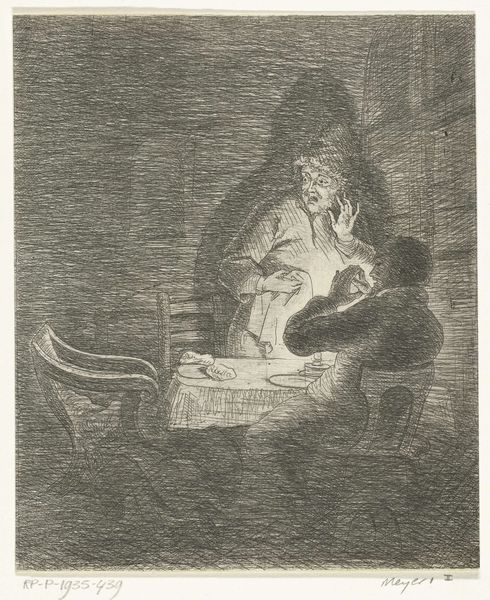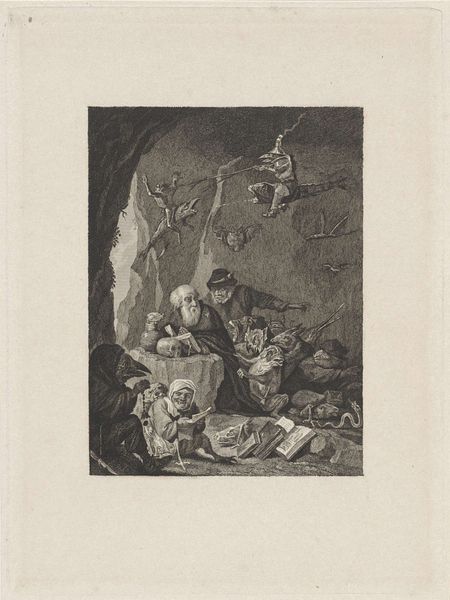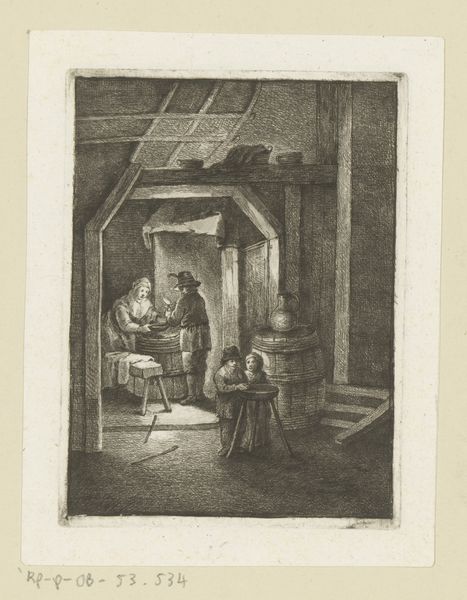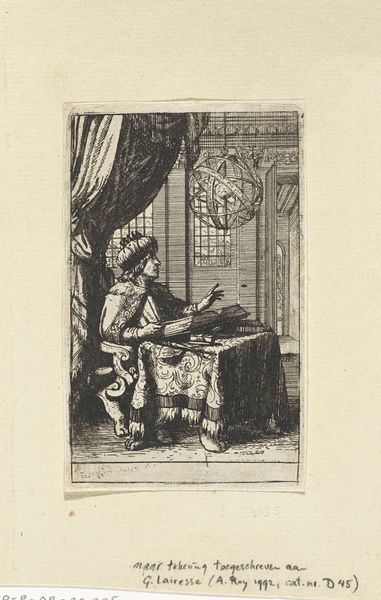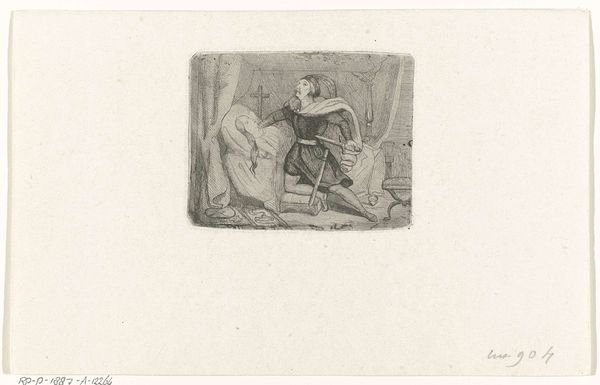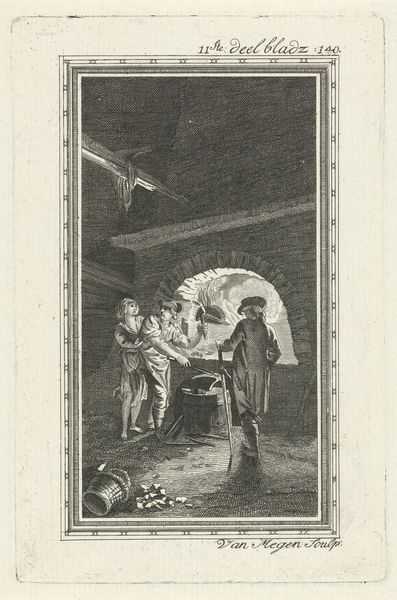
Dimensions: width 102 mm, height 119 mm
Copyright: Rijks Museum: Open Domain
Curator: Jacobus Ludovicus Cornet created this print titled "Geleerde in zijn studie", sometime between 1825 and 1882. The etching, now held at the Rijksmuseum, really sets a mood. What's your initial take? Editor: Somber, definitely somber. The tight composition, the darkness contrasted against the stark light of the lamp, the skull… it’s a scene steeped in contemplation of mortality. Curator: Yes, the memento mori theme is strong here. Considering the romantic period, this print may reflect broader anxieties about progress. How do you think the engraving as a medium, ties into its themes? Editor: The etching process, with its precise lines and the way it builds up tone, gives it an almost academic, methodical feel that’s appropriate to the scholarly subject matter. It feels intentional, a slow, deliberate construction, emphasizing the labour behind artmaking as a reflection of laborious learning. Curator: Absolutely. Looking at the materiality, it's clear how printmaking democratized imagery, moving intellectual pursuits outside elite circles. This connects to Cornet's choices – note the detailed depiction of everyday life contrasted with classic memento mori symbols. How does that tension strike you? Editor: It's striking. Formally, the composition directs your gaze from the skull and candle to the scholar, then to the globe behind him; guiding the viewers eye through the composition, from death to enlightenment to scholarly knowledge, reflecting on themes of transient life against lasting legacy. Curator: Cornet likely wanted to make a statement about labor. I’d suggest this piece challenges ideas around ‘high art,’ and instead is really engaged in showing knowledge is something created through toil, rather than being divinely accessed. Editor: Well, I can’t argue that the piece provokes thought around that tension, no matter Cornet’s intentions! Thanks to its design, the ideas really leap off the print. Curator: Indeed. The artist provides a tangible sense of history in this scene; it reminds us how such images were reproduced, consumed, and valued within 19th-century Dutch society. Editor: Ultimately, it’s an evocative piece, one that effectively uses light, shadow, and composition to create a lasting impression of reflection on knowledge and mortality.
Comments
No comments
Be the first to comment and join the conversation on the ultimate creative platform.
